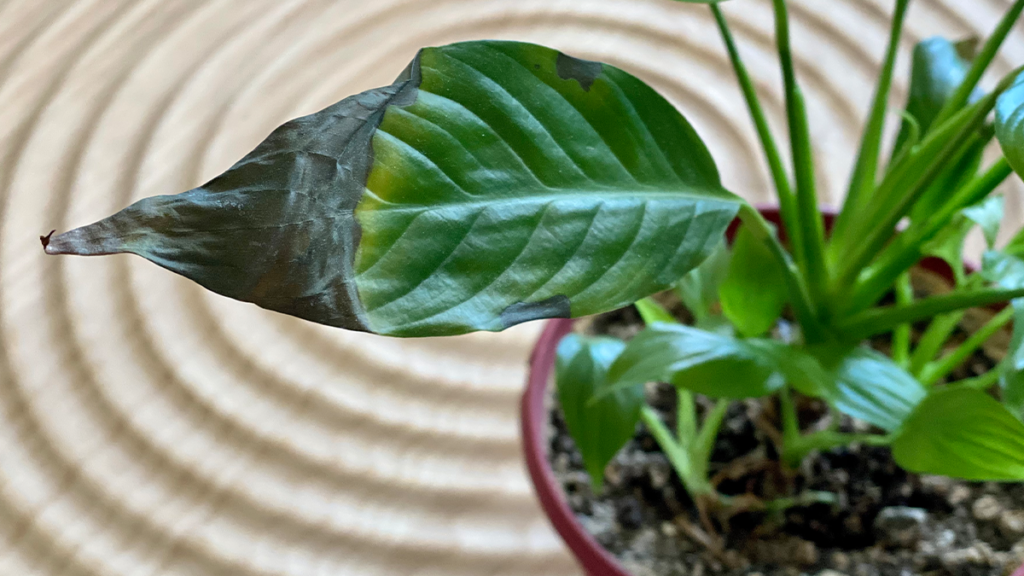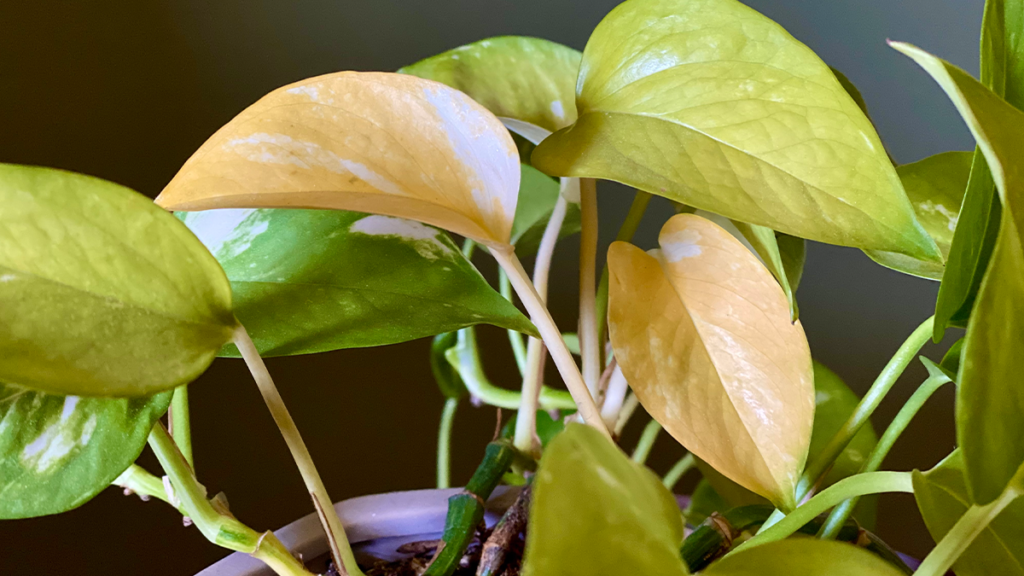Troubleshooting Common Houseplant Problems
Troubleshooting Common Houseplant Problems
Even with the best care, any well-loved houseplant can develop problems. By spotting those problems quickly and knowing how to correct them, however, you can keep all your houseplants thriving.

Top 10 Common Houseplant Problems
Different plants have different sensitivities to pests, diseases, and environmental conditions. The top problems that can impact a wide variety of popular houseplants include:
- Brown Leaf Tips
When leaves are browning from the tip inward, it is often signals an uneven watering schedule, dry air, or overfeeding. While tip browning can’t be reversed on a leaf once it exists, adjusting the watering schedule and improving local humidity can prevent it from getting worse and from new leaves developing it. Water with distilled water or aged tap water and reduce the overall feeding schedule. The tips can be trimmed with sharp scissors or snips to improve the plant’s appearance but leave a thin brown margin on the trimmed foliage to avoid further stress. - Stretching or Leggy Growth
Vigorously growing plants may stretch or grow lengthy stems, creating a loose structure and shaggy appearance rather than keeping a compact shape. This is typically due to a lack of light, and the plant is stretching out to reach a better light source. This is easily corrected by moving the plant into a better position, such as closer to a window or to a better angle relative to incoming sunlight. Adding supplemental light can also encourage bushier growth and reduce stretching. Rotating plants regularly can ensure they grow evenly in all directions. - Yellowing or Pale Leaves
Plants may have yellowing leaves for several reasons. If older, lower leaves are yellowing and falling off, this may be part of the plant’s normal aging process. If, however, the entire plant is yellowing or upper, new leaves are paler than expected, this is often due to too much light. Changing the plant’s position, such as moving it further from a window or changing to a darker space, can help restore richer foliage colors. Using draperies to diffuse stronger light is another option. - Curling Leaves
If foliage edges are curling up or new leaves are not unfurling as expected, this can indicate low humidity or underwatering. Setting a regular watering schedule can help you give the plant a more adequate water supply to meet its needs and increasing the humidity around the plant can lower the overall stress on the foliage. Consider using a humidifier, misting the plant regularly, or setting the pot on a pebble tray filled with water, but be sure the pot isn’t sitting directly in the water or it could lead to root rot. - Root Rot
A long period of overwatering or waterlogged soil can foster root rot, where a plant’s roots soften and are unable to uptake nutrition effectively. To correct root rot, the plant must be repotted in well-drained soil. Rinse the roots well before replanting and snip off rotted portions to remove the fungal infection. If you are reusing the same pot, be sure it is cleaned and sanitized before putting the plant back or the infection could recur. Be sure to use clean snips and sanitize when through. - Wilting
General wilting and listless, limp foliage, drooping, or weak stems could be a sign of many houseplant difficulties. Underwatering and chronic dehydration are the most common causes of wilting, but it can also be caused by stress from overwatering, root rot, or becoming root bound. To correct the problem, it is best to check for each cause and correct each one as needed. - Scorched Leaves
Foliage with a burned appearance, not just brown tips but throughout the leaves, is suffering from too much powerful light or fertilizer burn. If the plant is in a direct, sunlit area, moving it to an area of more diffuse, indirect light can minimize the problem. If overfeeding is the cause, reduce feeding and be sure fertilizer is properly diluted so it won’t cause burn-like spotting. Plant fertilization should be reduced in the winter months, this is a time when plant growth slows down substantially. - Spotted Leaves
Houseplants may develop peculiar spots on their leaves, which could be from spills on the plant, or a bacterial or fungal disease. If the plant is in the kitchen or anywhere near an area where splattering and spills are likely, moving the plant out of reach of accidental harm can correct the problem. If a disease is the cause, infected foliage should be carefully pruned away. Improving air circulation around the plant can help it resist diseases, and watering at the base instead of soaking the foliage will minimize the risk of getting and spreading fungal infections. - White Crust on the Soil
A white crust on top of the plant’s soil indicates salt buildup. This can come from too much fertilizer, poor soil drainage, or watering with hard water. To correct the problem, scrape off the buildup and top up the pot with good quality soil, or repot the plant completely in a pot with better drainage. Reduce the amount of fertilizer you give the plant and use distilled water to avoid adding additional salts to the soil. - Insect Infestation
A wide variety of insects can infect houseplants, including aphids, spider mites, mealy bugs, scale, fungus gnats, and more. As soon as insects are noticed, isolate the infected plant to avoid spreading the pests, and carefully identify the insects so they can be combated appropriately. Good plant hygiene and care practices will help a plant avoid or withstand an insect infestation. Insecticidal soap and neem oil are both effective in combating most houseplant pests.

When a Houseplant Can't Be Saved
There will be times when a houseplant may have extreme difficulties and it could be impossible to recover. All plants have a natural lifespan, and older plants may not recover from stress as quickly or effectively. Some plants are also more delicate than others, and even an otherwise common problem could cause irreparable damage. It is always worthwhile to try to correct common houseplant problems, and it can be helpful to bring photos of the difficulty to us for proper diagnosis and assistance. If the plant cannot be salvaged, however, it may be time to try again with a new houseplant. Instead of considering a lost plant as a failure, take it as a chance to start anew with a brand-new plant and an exciting expansion to your urban jungle.












